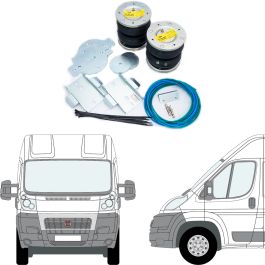ShaKen
Free Member
Following a question on another forum re semi-air suspension it got me thinking about the way it should be configured on a manual (non-compressor) setup.
I’ve fitted the Dunlop semi-air system without the con board compressor & tank and thus have a gauge with a two-way valve setup where you can isolate each airline to the 2 independent bellows (nearside / offside).
I’m of the opinion that when on the road, I should isolate each side from each other to maintain the pressure in each side.
However, another person has recommended that the valves are left open, effectively having the same air circuit across the two sides (they said that an installer recommend that) meaning that air can move from bellow (side) to the other (side).
But in my view if you leave the valves open then when cornering / turning, then natural movement due to centrifugal effect would roll the vehicle to the outside of the turn, put pressure on the bellow and thus force air into the opposite side, exacerbating the roll effect. In summary making the roll even worse.
What’s your thoughts / how do you setup your suspension?
P.S. Can everyone please refrain from turning this thread into a COVID/Brexit/Scottish Nationalist one. It would be nice to have a thread that sticks to the topic for once.
I’ve fitted the Dunlop semi-air system without the con board compressor & tank and thus have a gauge with a two-way valve setup where you can isolate each airline to the 2 independent bellows (nearside / offside).
I’m of the opinion that when on the road, I should isolate each side from each other to maintain the pressure in each side.
However, another person has recommended that the valves are left open, effectively having the same air circuit across the two sides (they said that an installer recommend that) meaning that air can move from bellow (side) to the other (side).
But in my view if you leave the valves open then when cornering / turning, then natural movement due to centrifugal effect would roll the vehicle to the outside of the turn, put pressure on the bellow and thus force air into the opposite side, exacerbating the roll effect. In summary making the roll even worse.
What’s your thoughts / how do you setup your suspension?
P.S. Can everyone please refrain from turning this thread into a COVID/Brexit/Scottish Nationalist one. It would be nice to have a thread that sticks to the topic for once.


